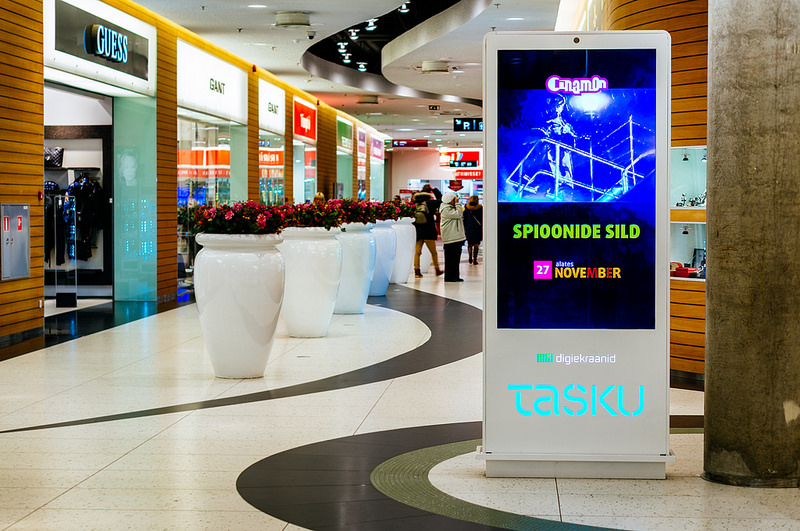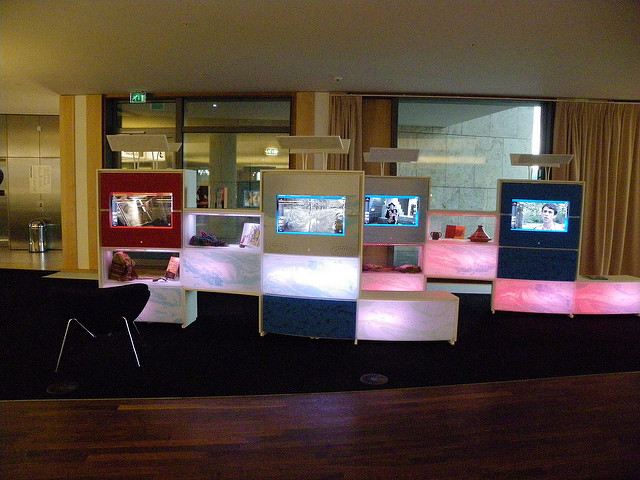Digital signage trends are altering themselves with each passing year. Some slowly over the course of several years, whilst others emerge out of the blue and come as a rather harsh disruption to the world of digital media. For some time now, executives from all industries anticipate digital disruption in the future on at least a moderate level.
Let’s highlight some of the most critical trends which have been growing in the field of digital signage in recent years, and will potentially dominate the upcoming ones as well.
#1 Social media
Social media has become an integral part of any marketing strategy. Although not predominantly applied in the field of digital signage, this is one of the digital signage trends which are crawling their way to the top. In any industry focusing on building a positive customer experience and keeping the customer engaged, social media is the way to go.
The main benefit of social media for any company is to extend their reach over the target audience. By broadcasting social media links in your signage, you can create promotions which can benefit you also in the social media world. An example would be using digital displays to encourage customers to take photos of themselves and add the company hashtag to receive a discount.
Such uses of social media tools in digital signage overall aren’t predominant. However, it is clearly a powerful tool and one which you should consider using. If anything, take advantage of it before it becomes a fairly standard thing.
#2 Interactivity
An interactive digital display is not uncommon, yet it still carries value and puts the customer into a mild state of awe once they are faced with a tool granting them access to nearly infinite data. Even though it stands well on its own, this particular feature works great with other digital signage trends like gamification.
Interactivity has been a powerful marketing trend even in 2016 and it will eventually grow into a feature which is expected in standard digital signage campaign.
Similar but much faster than social media, interactivity is rising as one of the main trends digital signage providers should be considering to apply in their marketing efforts. In a Global Industry Analysts study published in July 2015, researchers said the global market for multi-touch screens was projected to reach $8 billion by 2020. The state of this market was just above $3.5 billion in 2015, and it is very likely that the digit of $8 billion might even be surpassed by 2020.
#3 Gamification
Gamification is a term which has grown in popularity since 2006, when Nike+ pioneered this trend. One of the more unique digital signage trends, this process refers to taking experience one has when playing a game, and applying it to a different field, more specifically marketing.
Using gamification creates an immersive experience for consumers. This can include point scoring, competition, rules of play or similar methods which make the customer more engaged. One example of gamification is using public digital signage to host a game which keeps track of scores people can share. By competing and sharing their results, people spread the brand awareness.
Although gamification hasn’t been entirely adapted to the world of digital signage, it is growing more popular as new uses emerge for each individual industry. For instance, one cannot see a clear use for gamification in a museum, but an interactive and educational game hosted on a tablet can be a potential solution for visitors with children.
#4 Easier collection and use of data
Unlike most digital signage trends, this particular trend is one that isn’t as flashy or popular. A customer doesn’t care much about this one, but this is a trend which is of extreme use for digital signage providers and companies aiming to benefit from it.
With the advancement of digital signage, it has become much easier to track how many people are reached and influenced by your campaigns. Certain displays even have the ability to track how many people stopped and how many kept walking. A more common method of keeping track of reached audience is through call-to-actions. Any type of interactivity grants a great deal of information too, be it directly through touchscreen or by connecting to the display via Bluetooth.
Tracking and using this data can help owners understand how successful their digital signage campaigns are. Having this knowledge, it is much easier and efficient to sell advertising space as you have concrete data about how valuable your reach is.
Digital signage trends warp themselves and what was once a new and shiny business accessory is now becoming an integral component of every business with foot traffic. LED screen costs have plummeted down in the past year which has opened up many more options for digital signage providers. This freedom of choice has provided fuel for these trends to develop further and reach their peak faster than ever.
Images by Ellen Forsyth and TeroVesalainen.










